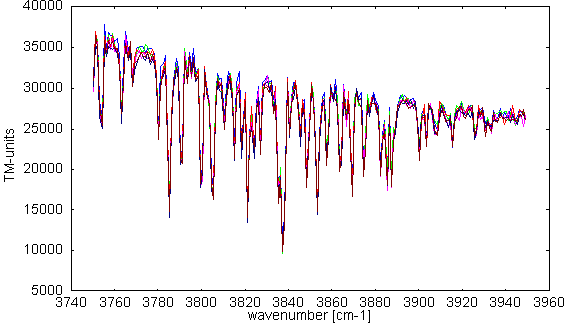
|
Experiment: PFS
PLANETARY FOURIER SPECTROMETER
INFRARED REMOTE SENSING OF THE ATMOSPHERE AND SURFACE
Main scientific objectives of the atmosphere studies:
monitoring of 3D temperature and pressure fields;
global mapping of winds;
variations of H2O and CO in space and time;
aerosols: optical depth, phase function, size distribution and chemical composition.
Main scientific objectives of the surface studies:
temperature and thermophysical properties of soils;
mineralogical composition of the surface;
surface condensates;
altimetry.
Instrument is a two-channel Fourier-spectrometer
| Main performance characteristics: |
| Channels | LW | SW |
| Spectral range [mm] | 5 - 40 | 1.25 - 4.8 |
| Spectral resolution [cm-1] | 2 | 2 |
| Angular resolution [deg] | 2,5 | 1.1 |
| Spatial resolution [km] from H=300 km | 13 | 6 |
| Total mass [kg] | 39 |

A part of the transmission spectrum of the terrestrial atmosphere measured by the PFS flight model in laboratory (one of the H2O bands). The path in the air was 0.5 m.
Cooperation: Italy, Russia, Poland, France, Germany, Spain.
| Contact persons: | V. Formisano, formisan@hp.ifsi.fra.cnr.it |
| | | V. Moroz, vmoroz@iki.rssi.ru |
|

